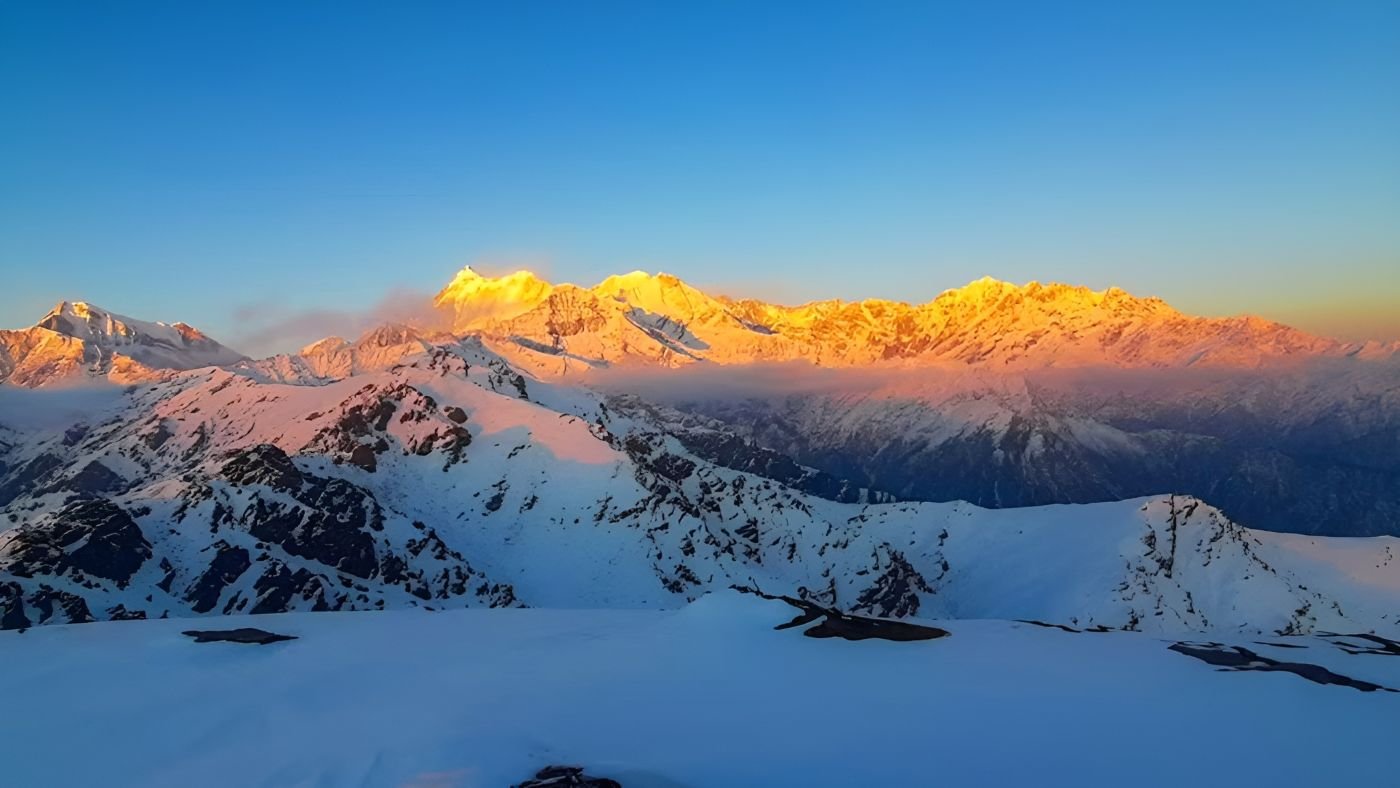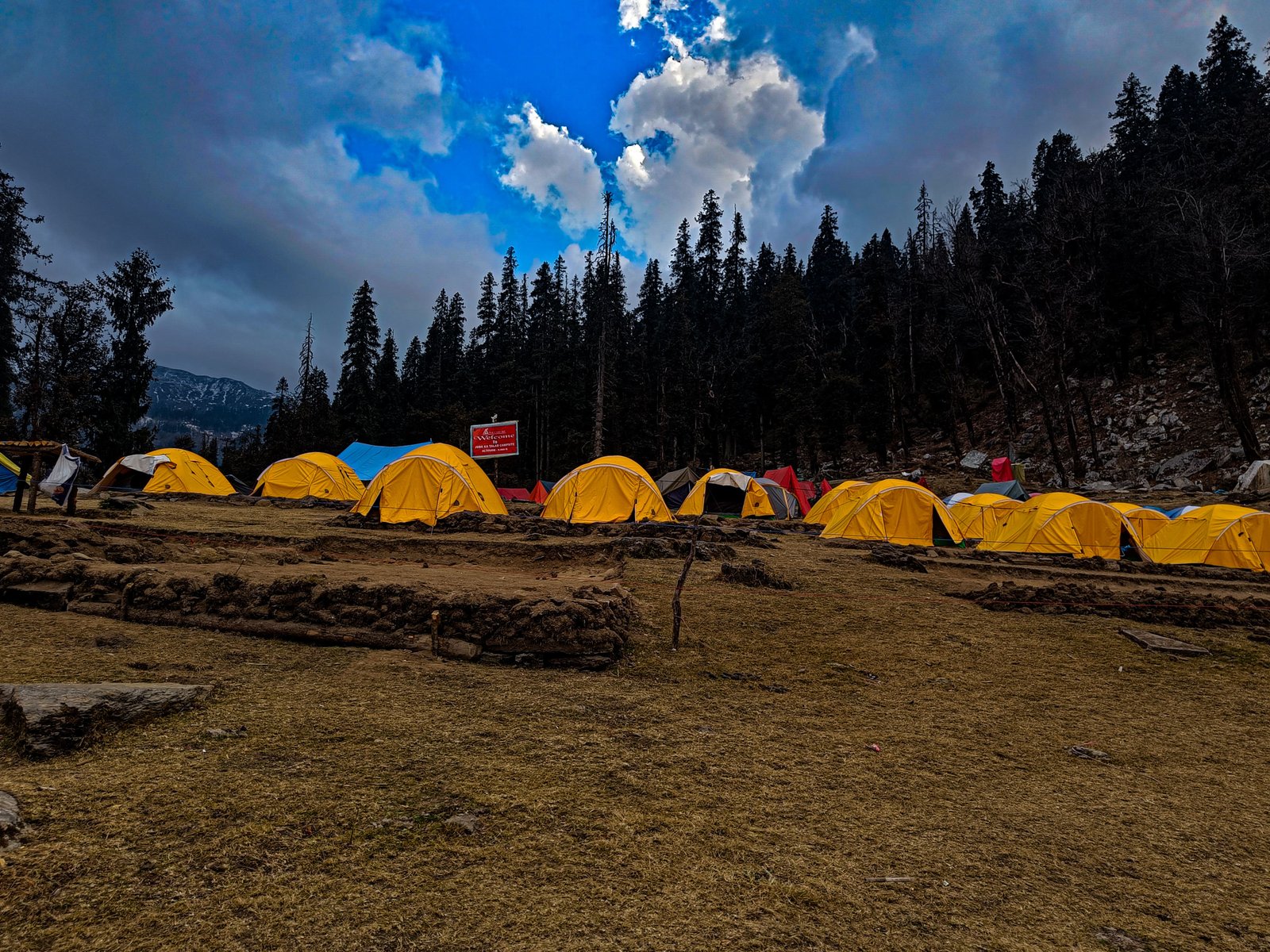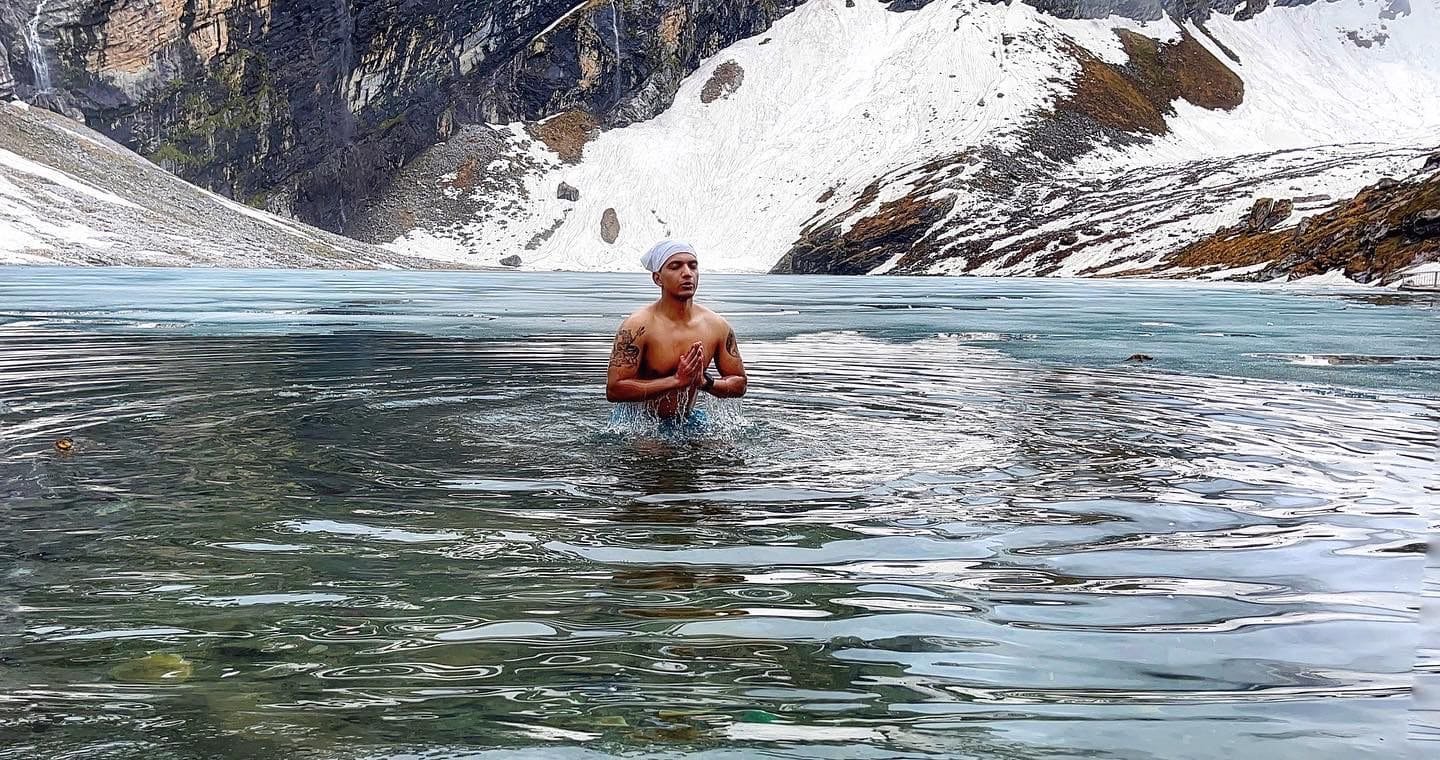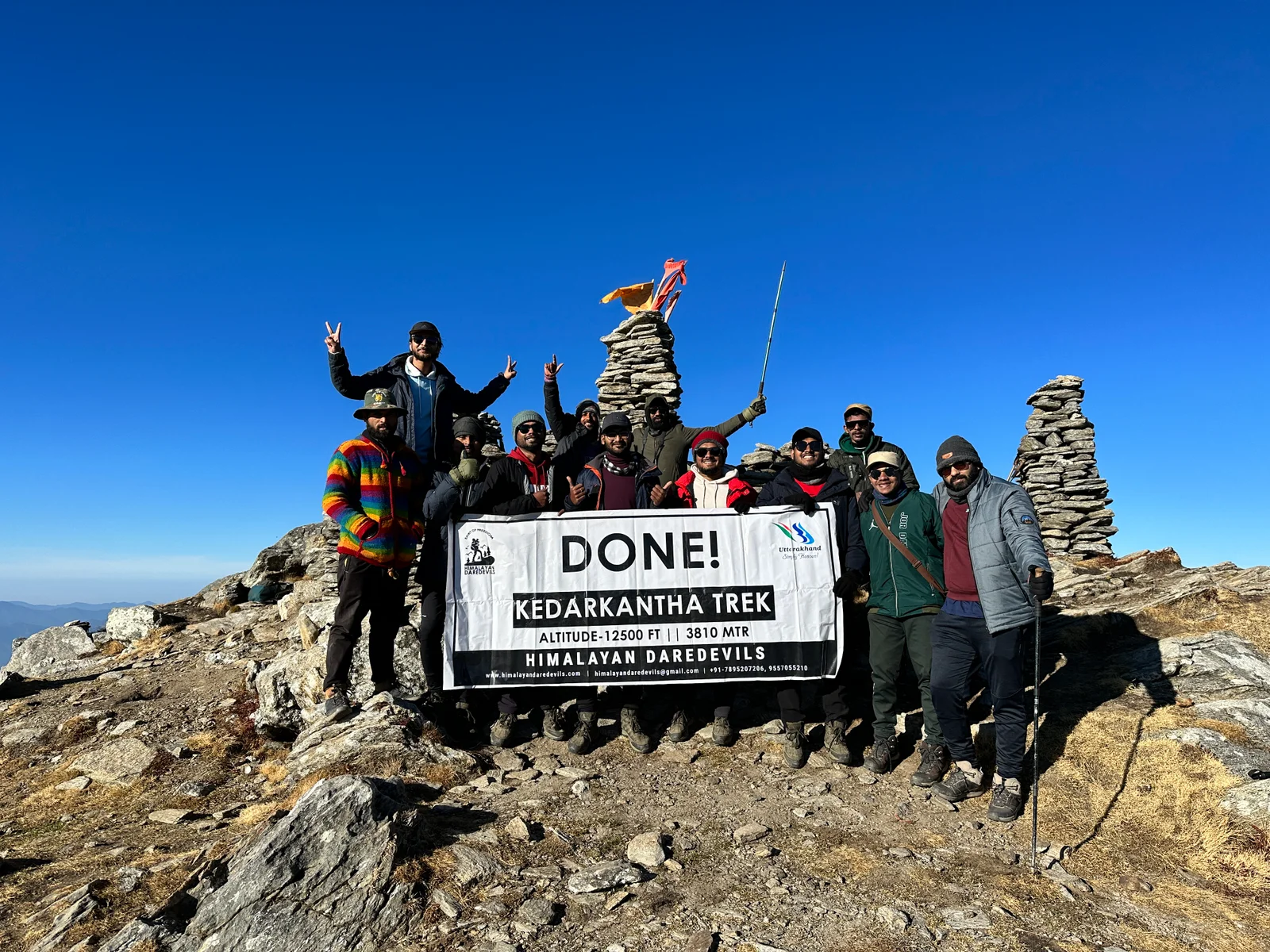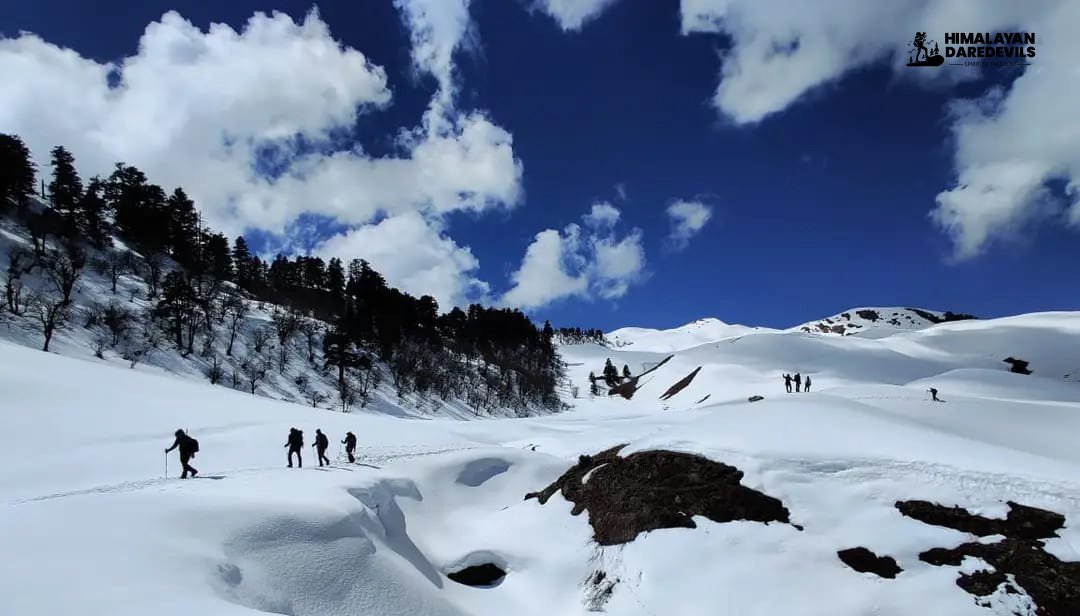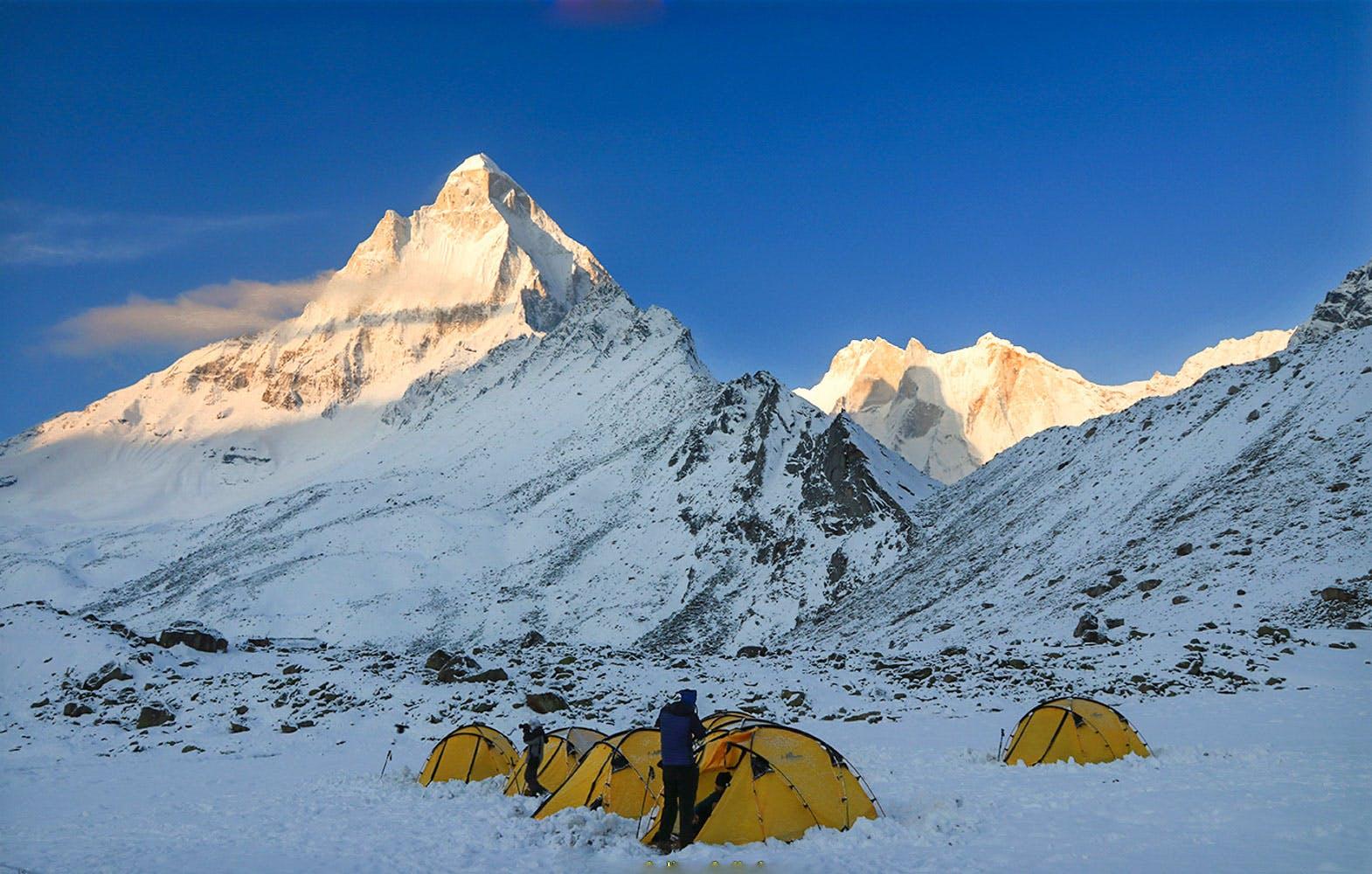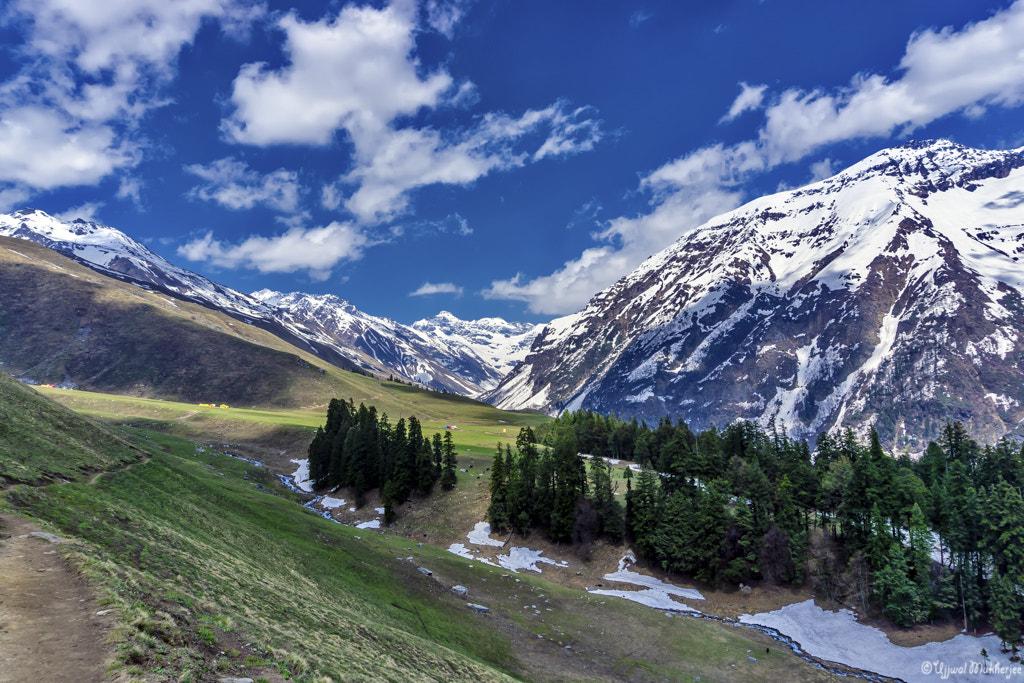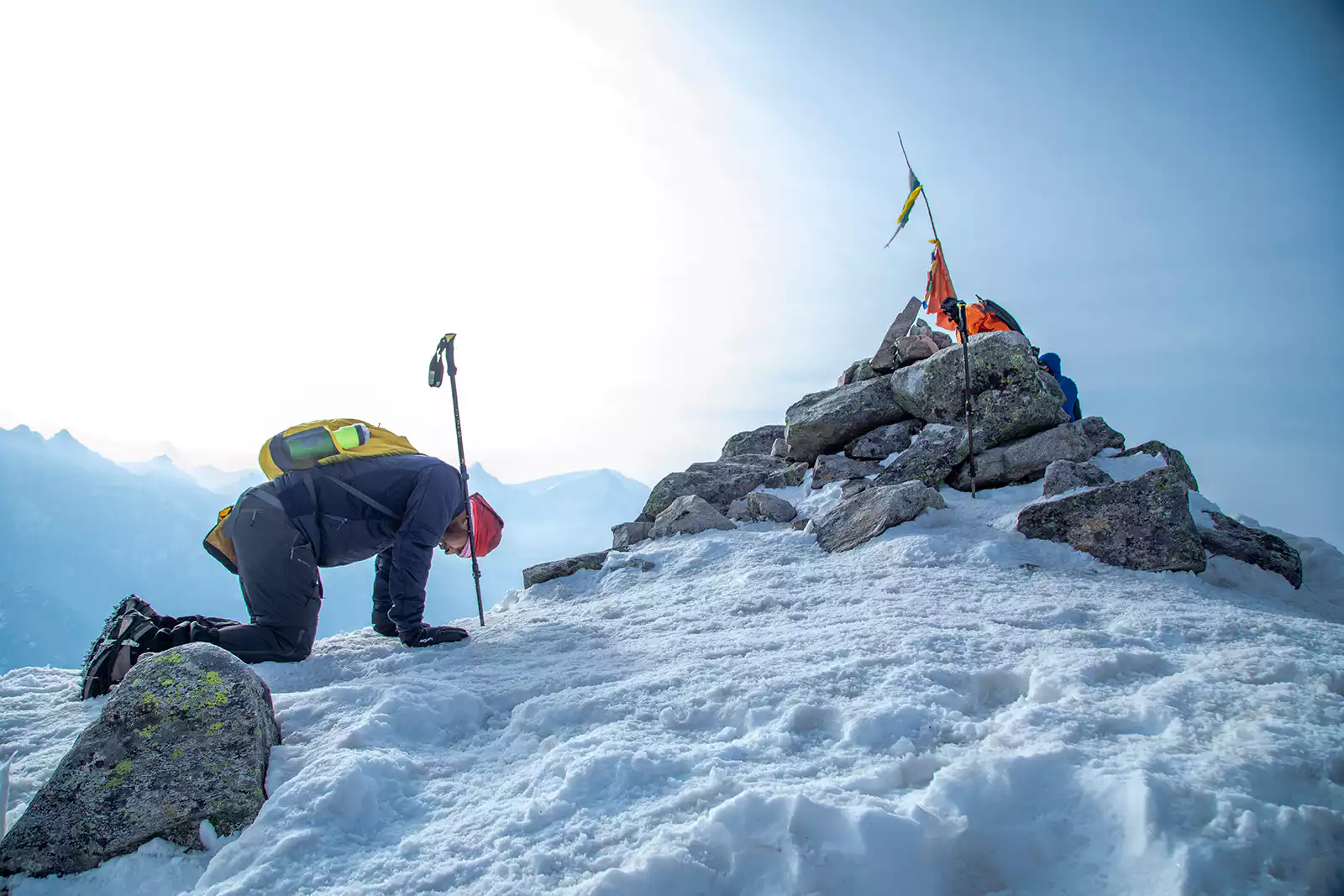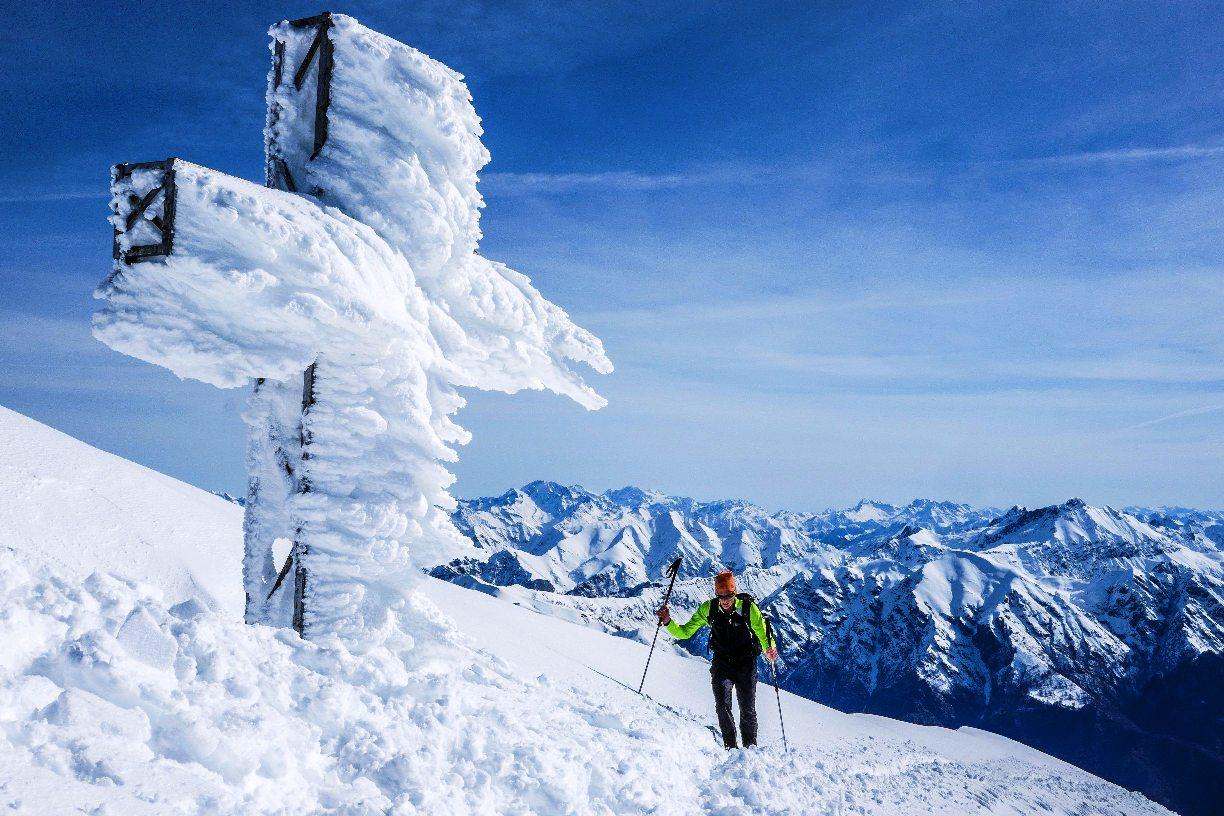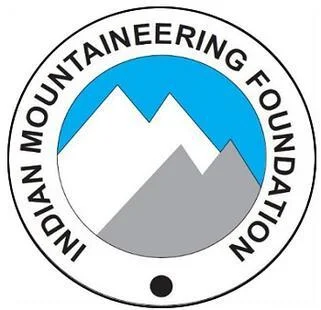25 August 2025
Ali Bedni Bugyal Trek is located in the Garhwal Himalayas in Uttarakhand, it is a high-altitude trek that takes you to the beautiful alpine meadows that are surrounded by majestic Himalayan peaks like Trishul and Nanda Ghunti. The journey to reach these alpine meadows will introduce you to lush green forests, cold glacial streams, quaint villages and panoramic ridgelines.
Whether you are an experienced trekker or an enthusiastic beginner, timing your trek plays a crucial role in how enjoyable and safe your experience will be. In this guide, we'll break down the best time for Ali Bedni Bugyal Trek season-wise, so you can plan your adventure based on weather, scenery, and trekking difficulty.
Why Season Matters for Ali Bedni Bugyal Trek
The Ali Bedni Bugyal Trek is situated at a height of around 11,500 ft, at this height the landscape changes dramatically with each season. The trek is covered with deep snow in the Winters while in the Summers the snow melts and the wildflowers bloom, the Monsoon comes with heavy rain and makes the trail slippery and dangerous but the Autumn brings clear blue skies and crisp and clear air. Each season has something to offer.
Here is why choosing the right season matters:
Ali Bedni Bugyal trek weather can make or break your journey. Harsh snowfall or monsoon rains can hinder movement and increase risk.
Scenery and visibility change with seasons, affecting your photography and visual experience.
Trek difficulty varies. For example, walking on snow or muddy trails requires more effort than trekking on dry ground.
Flora and fauna are season-specific. Wildlife sightings and blooming flowers are more likely during certain months.
Planning your trek based on the season ensures a safer, more scenic, and fulfilling adventure.
Season-Wise Breakdown of Ali Bedni Bugyal Trek: Weather, Views & Difficulty
Here is a season wise break down that will help you in deciding which month is the best time to visit the Ali Bedni Bugyal Trek:
1. Spring (March to April)
Weather:
Spring is when the trekking season starts. Daytime temperatures are moderate (10–15°C), while nights can still be chilly (0–5°C). You may encounter melting snow at higher elevations.
Views:
Rhododendrons bloom in bright pink and red hues, adding vibrant color to the forests. Snow-capped peaks like Mt. Trishul and Nanda Ghunti are clearly visible.
Difficulty:
Moderate. Some patches of snow might remain, requiring cautious footing. Trails are well-defined but can be wet or slippery in areas.
Highlights:
Flower-filled trails
Clear skies for mountain photography
Mild weather, suitable for most trekkers
2. Summer (May to mid-June)
Weather:
Pleasant and warm, with daytime temperatures ranging from 15–20°C and cooler nights around 5–10°C. Ideal for those who prefer snow-free trails.
Views:
The meadows of Ali and Bedni are in their full green glory. Panoramic views are often unobstructed with clear skies.
Difficulty:
Easy to moderate. Trails are dry and accessible, making it a good time for beginners and family treks.
Highlights:
Lush green bugyals
Clear mountain views
Comfortable trekking conditions
3. Monsoon (Mid-June to August)
Weather:
Frequent and heavy rainfall. Daytime temperatures hover around 10–18°C, with high humidity and slippery conditions.
Views:
Fog and clouds often obscure the mountains. However, the landscape is extremely verdant and rich in biodiversity.
Difficulty:
High. Trails become muddy and leech-infested. Landslides are also a concern on approach roads.
Not Recommended:
Due to safety issues like landslides, poor visibility, and trail damage, this season is best avoided.
Note: Some experienced trekkers still visit during early or late monsoon to enjoy solitude and the fresh greenery, but it requires advanced planning and local guidance.
4. Autumn (September to November)
Weather:
Post-monsoon freshness sets in with crisp air and pleasant days (10–15°C) and cooler nights (0–5°C). This is considered the best time for the Ali Bedni Bugyal trek.
Views:
The skies are crystal clear, offering unobstructed views of the Himalayan giants. The meadows take on golden-brown hues, creating a surreal landscape.
Difficulty:
Easy to moderate. Trails are dry and firm. Ideal for both beginners and experienced trekkers.
Highlights:
Best mountain visibility
Comfortable weather
Rich photography opportunities
5. Winter (December to February)
Weather:
Very cold, with daytime temperatures between -5°C to 5°C, and sub-zero temperatures at night. Heavy snowfall is common.
Views:
A white wonderland with snow-covered meadows and forests. Dramatic views of snow-capped peaks, but the trek is more challenging.
Difficulty:
High. Snow and ice increase the risk of slips and navigation issues. Only suitable for experienced trekkers with proper gear and guidance.
Highlights:
Virgin snow trails
Solitude and serene landscapes
Unique winter trekking experience
Tips for Safe Trekking in Each Season
Each season of trekking to the Ali Bedni Bugyal Trek brings with it unique sets of challenges. In the winters good spike boots are a must whereas in the monsoon rain cover and rain coats are life savers. Below are season-specific trekking tips to help ensure a safe and enjoyable experience, no matter when you decide to go.
Spring & Summer Trekking Tips (March to mid-June)
Best time for: Mild temperatures, rhododendron blooms, and green meadows.
Layer up smartly: Mornings and evenings are cool, while afternoons can be warm. Carry moisture-wicking inner layers, a fleece jacket, and a windbreaker.
Hydrate regularly: Even in cooler weather, the sun can dehydrate you. Carry a reusable water bottle or hydration bladder and sip often.
Sun protection is crucial: UV exposure is higher at altitude. Bring sunglasses with UV protection, SPF 50 sunscreen, a sun hat, and lip balm with SPF.
Start early: Cloud cover builds as the day progresses. Begin your trek early to enjoy clear views of Ali Bedni Bugyal trek’s majestic peaks.
Insect repellent: With spring blooms and summer warmth, insects can be a nuisance in forested areas. Carry a good repellent, especially for camping nights.
Monsoon Trekking Tips (Mid-June to August)
Note: Monsoon is generally not recommended for the Ali Bedni Bugyal trek due to safety concerns. However, if you're an experienced trekker and still plan to go, proceed with extreme caution.
Waterproof everything: A high-quality rain jacket, rain cover for your backpack, and quick-dry trekking clothes are a must.
Use trekking poles: Trails can get extremely slippery due to mud and moss. Poles help maintain balance.
Footwear matters: Wear high-ankle, waterproof trekking boots with good grip. Carry an extra pair of socks.
Leech protection: The lower forests can be infested with leeches during the rainy season. Carry salt or tobacco, wear leech socks, and inspect yourself regularly.
Stay informed: Keep track of the latest Ali Bedni Bugyal trek weather updates and road conditions. Be ready for delays or route changes.
Autumn Trekking Tips (September to November)
Best time for: Clear skies, perfect mountain views, and golden-hued meadows.
Pack warm layers: Mornings and nights can get chilly, especially from late October onward. A good down or synthetic insulated jacket is essential.
Photography ready: This is the best season for landscape photography. Carry extra batteries, memory cards, and protect your gear from dust.
Pre-book campsites: This is a popular season for the Ali Bedni Bugyal trek, and group traffic may be high. Secure your slots in advance.
Be weather-aware: Though skies are clear, sudden changes can happen. Always carry a compact poncho or rain jacket just in case.
Acclimatize properly: Spend time adjusting to the altitude at Lohajung or Didna before starting the trek. Walk at a steady pace and don’t rush.
Winter Trekking Tips (December to February)
Best for: Snow-covered landscapes and solitude. Not recommended for beginners.
Join a guided trek: Winter treks to Ali Bedni Bugyal are best done with professional guidance due to heavy snow, route obstructions, and avalanche risk in rare areas.
Carry snow-specific gear: Microspikes, gaiters, and trekking poles are essential for walking on icy or snowy paths.
Layer strategically: Follow the 3-layer rule — base (thermal), mid (fleece/down), and outer (waterproof/windproof) layers. Don’t forget thermal gloves and beanies.
Stay warm at night: Use a -10°C or better-rated sleeping bag. Hot water bottles and insulated sleeping pads are helpful.
Shorter daylight: Winter days are shorter, so always begin your trek early and aim to reach camp by early afternoon.
Stay dry: Even in snow, sweating is a risk. Avoid cotton clothing, as it retains moisture and can make you cold quickly.
Final Thoughts
The best time for Ali Bedni Bugyal Trek depends upon what you are looking for. Do the lush green meadows exploding with colorful flowers excite you? Or are you more of an adventure seeker who wants to trek through rain and snow? The Bedni Bugyal Trek has it all; you just have to visit it at the right time and with the right people who will guide you through the challenging himalayan terrain.
To make the most of your journey, trek with the experts at Himalayan Daredevils. Our experienced team, deep local knowledge, and commitment to safety ensure that you’re not just walking a trail — you’re living the Himalayan adventure the way it’s meant to be.
